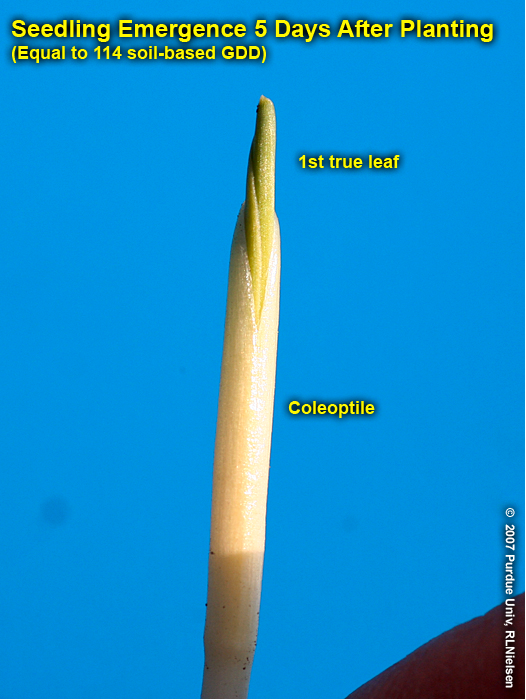Understanding the sequence of the visual indicators of germination in corn can help troubleshoot emergence problems.
Germination is the renewal of enzymatic activity that results in cell division and elongation and, ultimately, embryo emergence through the seed coat. Germination is triggered by absorption of water through the seed coat. Corn kernels must absorb (imbibe) about 30 % of their weight in water before germination begins. Less than optimum absorption of water (perhaps due to a rapidly drying seed zone) may slow or stop germination. Repeated wetting and drying cycles can decrease seed viability.
By comparison, soybeans must imbibe about 50 % of their weight in water. But since soybeans are approximately 2/3 the weight of corn kernels, the total amount of absorbed water required for germination is relatively similar.
The visual indicators of germination occur in a distinct sequence and are strongly influenced by soil temperature. Germination and emergence will occur in fewer calendar days when the seed is planted into warm soils than in cold soils. However, the thermal time from planting to emergence is fairly predictable, especially if estimated using soil temperature (Nielsen, 2017). Measured in terms of Modified Growing Degree Days (GDD), corn typically emerges in 115-120 GDD (equivalent to about 65 GDD Celsius) after planting.



